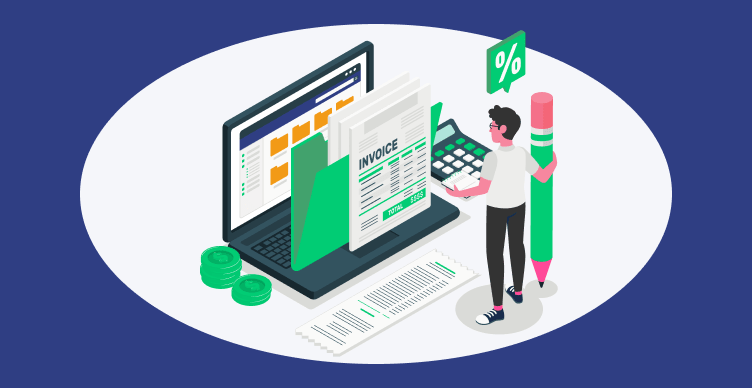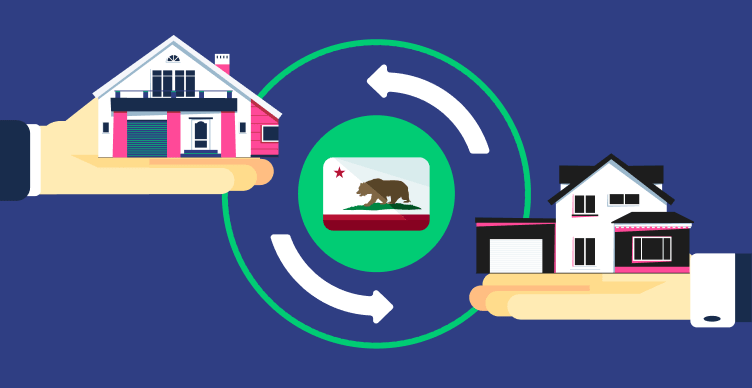The housing market in Utah has looked a little unstable recently- with dwindling house sales and increased market stays putting the heat on sellers.
Like many states, Utah appears to be in a bit of a housing bubble- with a lack of supply and mortgage rates climbing to a point where affordable homes are out of reach for the average American.
Utah housing prices are still up from recent times, and demand is not the problem- so the question is, will this bubble burst?
Here, we have shared an in-depth look at Utah real estate market trends- both state-wide and local market trends in the biggest cities.
You can also find predictions for the future of the Utah housing market- as well as an overview of the real estate picture in the US and expert opinions on whether or not a market crash is coming.
Core Utah Housing Market Trends
First things first: how are figures trending in the Utah real estate market now and in recent months?
Here, we compare key numbers year-over-year- including the average sale price, total home sales, and housing supply.
Median Sales Price
Median home prices refer to the average costs of houses sold. The median house cost most recently reported for Utah is $526,700- a slight dip year-over-year (-6%).
Utah home prices rose steadily through 2020, 2021, and for the first half of 2022- peaking in May 2022 at a little under $527,000 (26% growth from the previous year).
A downward trend began from there, and the average home prices fell to a low of just over half a million dollars in early 2023. March saw a decent improvement- but can it last?
Average Time Spent On the Market
The last year saw Utah's housing market trends take a sharp turn- and time spent at market was one of the categories most affected.
Most of the previous few years saw numbers fluctuate between 20 and 30 days- with the lowest report coming in mid-2021 at just 11 days.
Trends for 2023 are seeing numbers start to climb back down after a steep incline throughout the second half of 2022- hitting highs of 69 days in January 2023 (45-day increase YOY).
The figure has now dropped to 46- a better figure, but still a 37-day increase from the same period the year before.
Inventory- Number of Homes Available
There are significantly higher inventory levels in the Utah real estate market for 2023 than in recent years.
Total available homes have increased by more than 46% year-over-year, and the months of supply are up to 2- not enough to create a balanced market, but better for the housing inventory overall.
Interestingly, the number of new listings has dropped by almost a quarter- a trend that could create problems for property investors in the future if it continues.
Housing Demand- How Many Homes Sold
Utah's housing market trends for home sales have been in decline for the last few years. Although there have been dips and climbs following busy periods annually, the year-over-year comparisons continue to drop.
From January 2021 to January 2022 (historically the lowest sales month in Utah), there was a 4.7% decrease- which only saw a further decline into January 2023, with a more significant drop of 33.2%.
Foreclosures
The foreclosure rates have dropped significantly in Utah- taking it from having the 25th-highest number of foreclosures (compared to the number of properties) to the 30th-highest out of all the states.
Currently, there is one foreclosure for every 5725 houses- a vast improvement from one in 1127 the year before.
Other Important Housing Market Statistics in Utah
- 26% of Utah homes sold in the last reported month sold for higher than their list price. This represents a 37.1% decrease from the previous year.
- The overall sale-to-list price ratio was 98.7%- below the national average- and 4.2% lower than the year before for the same period (both the fourth quarter).
- 29.8% of homes recorded a drop in price in March 2023- a YOY increase of almost 13%.
What Are the Key Influences on the Utah Real Estate Market?
Rising Mortgage Rates
Overall, home sales in Utah are historically low. Mortgage rates have surged- pricing out many buyers due to unfeasible monthly payments and making homes generally less affordable.
It is the same story told throughout the US right now- with interest rates rising to keep up with Federal Reserve inflation- leaving healthy buyers' markets in the dust.
The Economy
Every state's economy influences the housing market- especially in trying times such as these. Luckily, Utah has a strong job market that is likely to hold fast against sweeping foreclosures and market collapse likened to the Great Recession.
That said, with people struggling to make money stretch as far as it needs to, Utah home prices may need to tumble if the housing demand is to survive.
Inventory and Supply
Utah home prices have been on the rise for quite some time- and it is rare to see home prices drop in this state. Part of the reason why is the supply and demand balance- which has maintained a reasonable split in recent times.
Despite a huge surge in inventory, there is currently a lacking supply- which encourages sellers to increase their ask- driving up median listing prices, especially for single-family homes.
Housing construction seems to have slowed dramatically, and falling home sales could be related to the lack of new properties for investors.
The housing shortage across the US is having an impact on the housing market nationwide.
Information on Utah Local Housing Markets
Most of the local housing markets in Utah reflect the same trends as the state. Sales are down, market waits are longer, and prices have dropped- but not by much.
Here are three of Utah's leading city housing market trends.
Salt Lake City, Salt Lake County
Salt Lake City median sales prices have remained fairly consistent month-to-month, but are showing a 9% drop YOY. The average figure is $535,000- a little higher than the median for the state.
Market waiting times have almost doubled from the previous year- and total sales fell by more than a quarter. Price drops are becoming more common, and the sale-to-list price ratio is 99%.
West Valley City, Salt Lake County
The real estate market in West Valley City is more competitive than Salt Lake City- most likely because of the lower costs. Compared to Salt Lake City, the houses are quite affordable- with a median sales price of $430,000.
Although overall sales have dropped 60% year-over-year, the current market is moving faster than in SLC- with most houses spending 25 days on the market, rather than 38 like in Salt Lake City.
Provo, Utah County
Provo has even better affordability and has not experienced as much of a dip in sales year-over-year for recent months. The average home price is $405,000- with more than a quarter of properties dropping their price in March 2023.
Although not as competitive as West Valley City, Provo does have a shorter market stay time than Salt Lake City- with the average sitting at 30 days.
The total number of homes sold in Provo only dropped by around 15% in March 2023- a vast improvement on numbers from the previous half-year.
Is the Utah Housing Market Likely to Crash?
Overall, the real estate market in Utah is not in the same trouble as it was in the Great Recession- and an imminent crash is unlikely.
Things are certainly cooling, and the slowdown is likely to continue- especially with unaffordable mortgage payments pricing out many potential buyers.
An off-balanced supply and demand ratio keeps Utah home prices high for now, but sellers may have to rethink if they don't want to get stuck at market.
Considering the sharp incline in the median market days, this is something Utah sellers need to worry about.
It seems a market correction is in play after the mad rush following the pandemic- and all things considered, the numbers are not too bad.
However, if a better balance on affordability doesn't appear in the median sales price, Utah's housing market could see sales continue to drop.
Other Utah Housing Market Predictions
Here are the general predictions for the Utah housing market over the coming year.
Falling House Prices
The Utah real estate market is actually still sitting in a much better position (price-wise) than it was before the pandemic. Yes- the buyer's frenzy on the back of the lockdown rocketed the price ceiling in Utah from its previous high of less than $400,000 to just under $576,000.
Sure, with the lull in buyer activity following increased mortgage rates, the housing prices have dropped from these giddy heights- but the average is still well about $500,000- a significantly better place than pre-pandemic.
To that end, the Utah real estate market can (in theory) handle further drops in home prices- which is fortunate, because they are predicted for the year ahead.
How far they will drop depends on interest rates, housing inventory, and how motivated sellers are to get their properties off the market.
Continued Slowing of Activity
Overall, the Utah housing market is expected to slow down even more than it already has. Between climbing interest rates, high home prices, and long market stays- it seems the rush is over for Utah sellers.
Unless home prices drop significantly, the number of houses sold is likely to hit 10-year lows, according to experts. If the prices do drop too much, it could create instability- so it is a precarious time all around.
Housing Market Predictions for the Whole USA
Moving out of Utah, let's take a quick look at the predictions for the US housing market as a whole.
Mortgage Rates Continue to Increase
Mortgage rates are on the rise, and thanks to inflation, ongoing geopolitical tensions, and the post-pandemic fears of another recession- they are unlikely to change course in the near future.
The impacted sales can be felt nationwide- and things are predicted to continue on the same course. In every state, real estate market trends are reacting poorly to the pressure of climbing mortgage rates.
Uncertainty Surrounding Home Prices
There is a bit of debate amongst experts about what to expect from US home prices going forward.
The overwhelming opinion is that sellers in the US will have no choice but to drop their prices if they want to sell- because of the rising mortgage interest rates. Lowering asking prices to make properties more appealing (and affordable) to home buyers seems like the only way to curb the dwindling sales numbers.
That said, there is another side to the argument. Other experts predict that the national inventory shortage keeps the power in the seller's hands. Since the demand is higher than the supply, there should- in theory- be competition between buyers to keep prices up.
It could go either way- and it may vary from state to state.
Reduced Affordability
One thing seems certain- houses are likely to become generally less affordable for most Americans.
Prices may drop in response to slowing sales, but they are unlikely to make enough difference to offset the expensive monthly payments created by high mortgage rates.
Also, since inventory remains low, competition between buyers could quickly price a lot of people out completely- especially in states with higher median listing prices.
Fewer Home Sales Nationwide
The entire country has experienced a drop in sales- and experts are predicting no change in the coming months.
High mortgage interest rates combined with a limited housing supply and unpredictable pricing make the housing market, as a whole, a more difficult landscape for buyers.
Summary
In short, the Utah real estate market faces the same challenges as the rest of the country. The state remains strong in its job growth and general economy- so disaster is unlikely at this time.
It has been a flaming hot marking in Utah over the last couple of years, but that has come to a swift end. Things are only set to slow down even more.
A crash is unlikely, but a rare price drop for Utah properties could be on the card to help stave off a complete halt in house sales.
FAQs
Where in Utah has the fastest growth rate for house prices?
Right now, Pleasant Grove has the highest sales growth rate, at 16.5%. Provo is in second place with 14.1% growth in prices, and in third is Washington, UT- which saw sales prices rise by 12.3%.
These figures are general, and there are still declines in some year-over-year comparisons.
Does Utah have a balanced housing market?
Historically, no- Utah's housing market is not balanced- but it could head that way if prices are forced to fall.
The Utah market currently favors the seller- with high prices, low inventory, and essentially- all the cards!
However, with higher financing costs and an increase in housing supply, Utah buyers could finally take back some of the power- tipping the scales a little towards better balance.













































































































.svg)
























